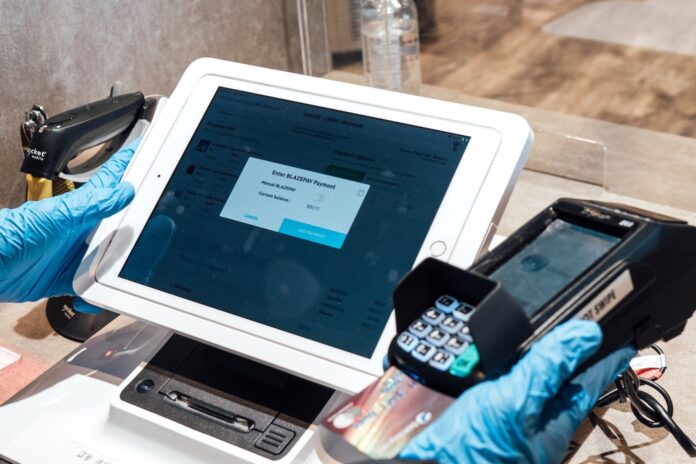Unscalable. Clunky. Siloed. That’s how many users describe today’s cannabis technology stacks. The reason? Cannabis-specific software-as-a-service (SaaS) platforms suffer from poor connectivity with one another, making it difficult for businesses to create interapplication workflows or solutions that require multiple third-party systems.
Today’s businesses require fast, reliable, and compliant tech-stack connectivity. But with the industry still in its infancy, there’s a long road ahead to create seamless infrastructure and connectivity. It’s up to the community at large to ensure the road is not a congested one-lane dirt road but a four-lane highway enabling maximum connectivity and speed.
The result? Better customer experiences, improved systems and processes, and increased growth and scalability. Let’s get into how this is possible.
The main challenge stems from the lack of a common data model or a shared strategy for maintaining consistent and standardized data input and output. The financial services industry, for example, has a nonprofit entity—the National Automated Clearing House Association—that helps ensure the consistent use and shape of automated clearing house (ACH) files for streamlined transfer of electronic funds across banks and their stakeholders.
How does this independent organization get every other company to agree to these data formats and standards?
They use an enticing incentive. ACH files are how banks interact with one another, transferring funds from account to account. It’s important these files are consistent, clean, and clearly formatted, regardless of which bank is sending or receiving funds. With a standardized format, banks can send and receive funds efficiently and without error—leading to increased economic activity across the entire financial system.
These data frameworks took the financial services industry years to develop. The absence of similar frameworks isn’t a criticism of cannabis-specific service providers—especially since the industry is still in its early stages—but it emphasizes the need to develop interoperability and streamline connectivity between tech systems.
What’s the incentive for cannabis businesses to adopt a common data model?
As an industry, we need to look for key incentives that will enable operators to benefit from enhanced connectivity throughout their own unique tech stack. A few good starting points include:
- Creating stickier relationships to build customer loyalty and retention. When one platform easily integrates with other tools in a business’s tech stack, it fosters brand loyalty by creating connected experiences that follow a consumer across multiple touchpoints with a given brand.
- Establishing upselling and expansion opportunities by ensuring compatibility with third parties to enrich existing product, pricing, and customer data, as well as unlocking new channels for sales and/or payments. This also opens additional revenue streams for individual tech providers.
- Facilitating connections between existing SaaS platforms. This empowers operators to be more productive while also driving operational efficiency.
Businesses in other industries typically can choose key features and functionalities they want to leverage from different systems. This way, whether through third-party integrations or direct native integrations, operators can create connectivity and tailor each service and vendor they work with to meet their specific business needs.
For example, a traditional brand may choose its own ecommerce provider, as well as one (or multiple) payment processors and a marketing and analytics tech stack. Then, they can tie all these tools together using one of the many content management systems they may choose to run their website.
On the other hand, cannabis tech’s connectivity issues limit operators’ ability to create their own solutions to the problems they face. Currently, operators must stick with one vendor that solves their customer communication, operational challenges, inventory management challenges, or finance issues. Operators must rely on the vendor to make changes or enhance their product to better meet business needs.
Why is connectivity important?
Take the example of payments. Moving money is one of the most critical aspects of any business, and the ability to make and receive payments efficiently is a necessity. Unfortunately, in cannabis it often seems like a luxury.
When considering whether to connect your financial tech stack, bear in mind the benefits that come from true system-to-system integration are trust and consistency. There’s trust when you know exactly where your data is so you don’t have to leave a specific service to check your balance, submit a payment, or write a check. If you do everything through one simple interface, you know exactly what, with whom, and how you’re transacting.
Consistency ensures there’s less room for error, missed payments, or missed opportunities to increase payments. With enhanced consistency, you’re able to get a full, 360-degree picture of your finances as an operator from both an accounting and back-office perspective. How is your sales pipeline looking? What is your demand? What’s the revenue forecast for the next six months? How are you measuring fixed and variable expenses? Having all of that data consistently available means you don’t have to swivel between systems to see data that may live on disparate platforms.
Retail customers also benefit from enhanced tech-stack connectivity as it gives them the ability to choose how they want to interact with the business and how they want to pay and transact. We’ve all experienced a trip to a local dispensary that, without warning, has changed the forms of payment it accepts. Not only does this create confusion at checkout, but it also creates loyalty and trust issues. Customers likely don’t understand why the business has to keep changing its payment methods or why it has new checkout processes.
Improved connectivity offers customers greater predictability at checkout, as dispensaries won’t need to keep changing their payment methods and processes. In addition, the in-store retail experience becomes more user-friendly and online transactions become more efficient.
The industry has a way to go before all cannabis-specific tech tools offer enhanced connectivity, but we already are seeing a steadily increasing commitment to elevating and standardizing data formatting. This collaborative effort calls attention to the need for products and services that can help the community connect its tech tools seamlessly. As such, a common data model for vendors is becoming more crucial by the day.
This is an exciting time for the industry and a testament to our determination and growth potential. The road to improved canna-tech information and connectivity is well on its way to becoming a major highway.

Mike Kennedy is co-founder and chief strategy officer at Green Check. With a background in helping community financial institutions leverage technology to manage compliance and risk, he has helped hundreds of institutions develop and implement bespoke compliance programs.












